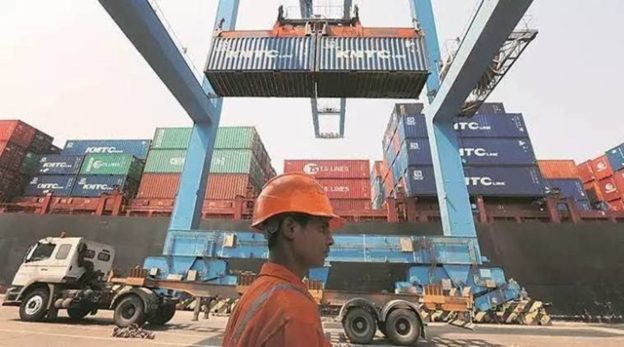The integration of Indian companies in the GVCs is fundamental as about 70 per cent of global trade operates within these chains, encompassing a wide range of products, from electronics and machinery to pharmaceuticals and apparel.
Steps like streamlining port and customs operations, and setting up of national trade network will help Indian firms integrate with global value chains and add USD 1.2 trillion in the country’s foreign trade by 2030, according to a report.The Global Trade Research Initiative (GTRI) said that currently, India’s limited participation in global value chains (GVCs) hampers its export potential, despite possessing substantial manufacturing capabilities across various GVC-relevant product categories.The integration of Indian companies in the GVCs is fundamental as about 70 per cent of global trade operates within these chains, encompassing a wide range of products, from electronics and machinery to pharmaceuticals and apparel.
“India’s weak GVC integration can be attributed to poor trade infrastructure, causing delays at ports and customs, which are detrimental to the timely flow of goods in these intricate value chains,” GTRi Co-Founder Ajay Srivastava said.Countries like China, Japan, South Korea, Thailand, and Malaysia have excelled in GVCs due to investments in quality trade infrastructure.
The GTRI report has recommended six action points to the government which can help boost the participation of domestic firms in GVCs.The suggestions include automating port and customs procedures, and implementation of green channel clearances for 99 per cent of shipments; analysing the top 10,000 exporters responsible for 85 per cent of India’s exports; matching global best practices for ship turnaround times, reducing queues, speeding up transactions, and optimizing infrastructure use; and enhance communication between traders and shipping companies, port operators, and Container Freight Stations (CFS).The report asked for creation of an online platform for all export-import compliance processes.”National Trade Network (NTN) would enable exporters to submit all required information and documents in one place, eliminating the need to interact separately with customs, DGFT (directorate general of foreign trade), shipping companies, ports, and banks,” Srivastava said.
The other steps include focus on high-value segments of GVCs, product conceptualization, design, prototype development, and after-sales services.Countries like the US, Germany, Japan, Taiwan, and South Korea excel in R&D expertise at the high end, while China specializes in final assembly at the lower end.Further, it suggested inviting top global firms to become anchor manufacturers in priority sectors.”We know their names. Apple and Micron are a good beginning. With thousands of manufacturing units in most sectors, India needs a few large anchor firms in each sector. Their use of innovation and technology will result in gains for all firms in the entire sector – the way Suzuki did to India’s automobile sector in the early 1980s,” he said.Citing renowned examples of GVCs, the report said that for Apple’s iPhone, R&D and critical component design happens in the US; Taiwan produces semiconductor chips; South Korea makes OLED displays and semiconductor components; Japan manufactures memory chips, capacitors, and sensors; Malaysia, Vietnam, and Thailand produce specific components or assemblies.
All these components and subassemblies are sent to China, where final assembly takes place in facilities operated by Foxconn, Pegatron, and Wistron. Apple manufactures iPhones in India, and its supply chain involves various countries for different components, it said.Similarly, for laptops, Taiwan produces processors and semiconductors; South Korea makes displays, memory chips, and storage devices; and Japan manufactures batteries, sensors, and some semiconductor components.Malaysia, Thailand, Indonesia, and the Philippines provide labour and assembly services, along with making components for specific brands; and Vietnam handles assembly operations for a few brands. In China, 90 per cent of laptops are ultimately assembled, with major manufacturers having manufacturing facilities there.
https://www.financialexpress.com/policy/economy-deeper-participation-in-global-value-chains-to-help-india-add-usd-1-2-trillion-to-foreign-trade-by-2030-gtri-report-3254323/





